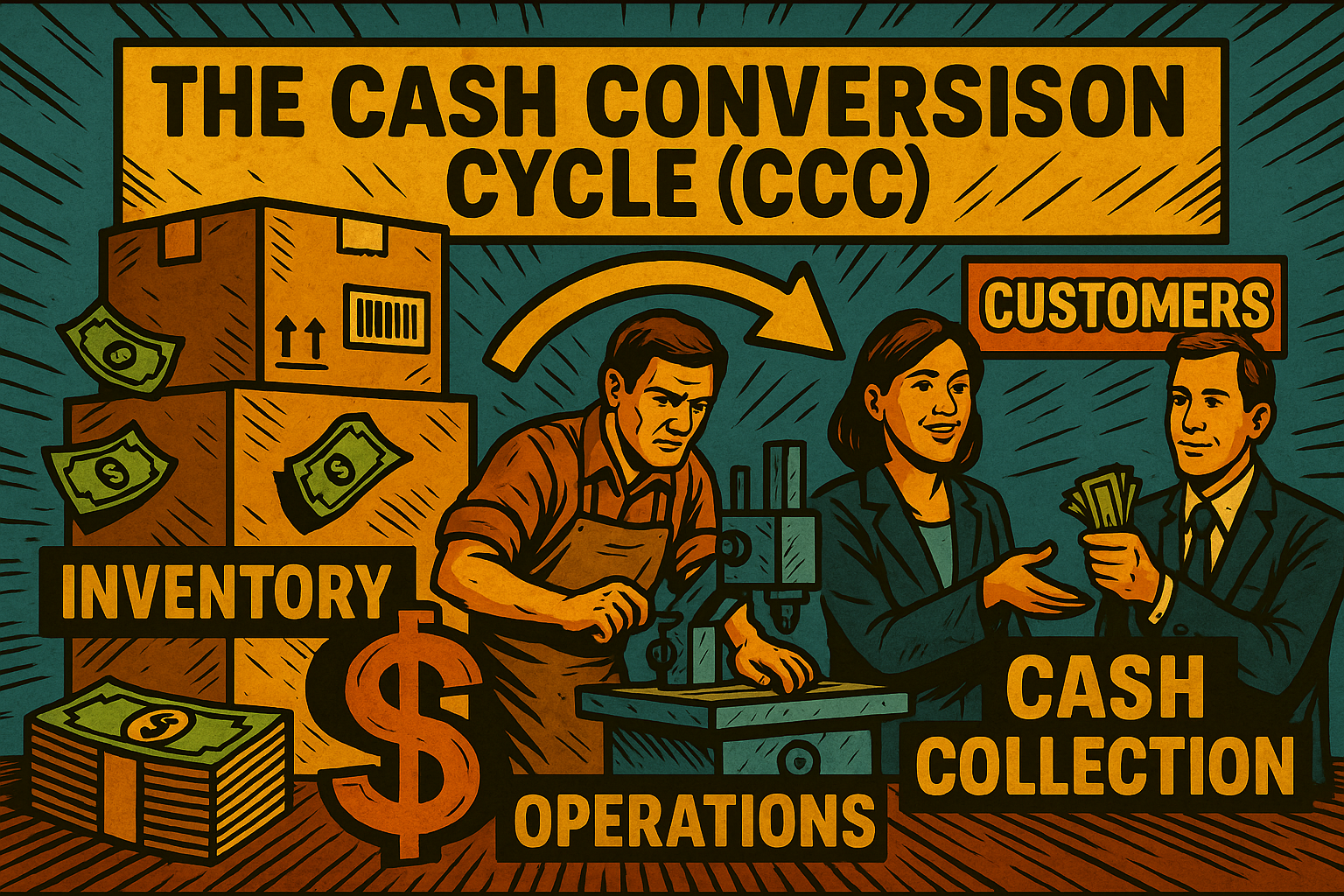Cash Conversion Cycle (CCC)
“Cash That Hustles Beats Cash That Rustles.”

🔄 Understand Your Cash Conversion Cycle (CCC)
The Cash Conversion Cycle (CCC) is a critical metric that tells you how long it takes for your business to turn cash spent on inventory and operations into cash collected from customers. It represents the number of days your cash is tied up in the production and sales process before it flows back into your account.
Think of it as the “heartbeat” of your cash flow: the faster the beat, the healthier the flow.
How CCC Works
The CCC is made up of three components:
Days Inventory Outstanding (DIO)
How many days, on average, inventory sits before it’s sold.
Lower is better.
Formula:(Average Inventory ÷ Cost of Goods Sold) × 365Days Sales Outstanding (DSO)
How long it takes, on average, to collect cash from a sale (accounts receivable).
Formula:(Accounts Receivable ÷ Total Credit Sales) × 365Days Payables Outstanding (DPO)
How long, on average, you take to pay your vendors (accounts payable).
Higher is better—if it doesn’t harm supplier relationships.
Formula:(Accounts Payable ÷ Cost of Goods Sold) × 365
Cash Conversion Cycle Formula:CCC = DIO + DSO - DPO
Why CCC Matters
A shorter CCC means cash is coming back into the business faster—boosting liquidity.
A longer CCC means more working capital is tied up in operations—potentially limiting growth, payroll, or other spending.
CCC is a key efficiency indicator for businesses in retail, manufacturing, wholesale, and distribution.

How to Improve or Shorten Your CCC
📦 1. Optimize Inventory (Lower DIO)
- Forecast demand more accurately to avoid overstocking
- Improve inventory turnover through promotions or lean supply chains
- Use just-in-time (JIT) methods where feasible
💳 2. Accelerate Collections (Lower DSO)
- Invoice promptly and clearly
- Offer early payment discounts or require deposits
- Use digital payment tools to speed up receipt
- Follow up consistently on overdue accounts
🧾 3. Extend Payables (Increase DPO — responsibly)
- Negotiate longer payment terms with suppliers
- Avoid paying early unless it gives a financial incentive
- Use the full term without damaging vendor relationships or reputation
Example:
Let’s say your CCC is 60 days. That means your cash is tied up for two months before you get it back. By tightening inventory and receivables and extending payables, you could shrink your CCC to 35 days—freeing up nearly a month’s worth of cash for operations or reinvestment.
Every day you shave off your CCC puts more cash in your pocket without raising a dime in revenue.

